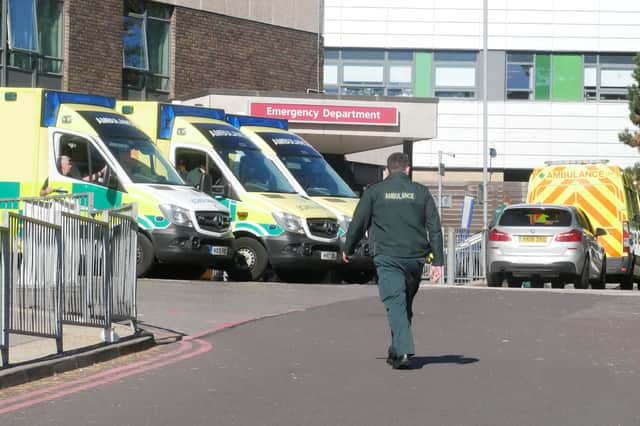Portsmouth's A&E under pressure following surge in ambulance patients


NHS data shows 912 people arrived at Portsmouth Hospitals NHS Trust A&E by ambulance in the week to January 23 – up from 855 the week before.
Of the arrivals last week, 285 (31 per cent) waited more than 30 minutes before being handed over to A&E staff, with 129 (14 per cent) waiting more than an hour.
Advertisement
Hide AdAdvertisement
Hide AdThis was up slightly from 30 per cent waiting over half an hour the week before.
The NHS has a target of 15 minutes for ambulance handovers, but only delays longer than 30 minutes are recorded.
The data also shows an average of 214 staff were off sick because they had Covid-19 or were self-isolating due to the virus each day in the week to January 23 – accounting for 44 per cent of absences down from 46 per cent the week before.
Professor Stephen Powis, NHS England’s national medical director, said: ‘While it is positive to see more NHS staff back at work, pressure on the NHS is still intense, having seen the busiest week for ambulances taking patients to A&E since the start of December – all while pushing to deliver as many routine checks and procedures as possible, including vital diagnostic checks.
Advertisement
Hide AdAdvertisement
Hide Ad‘Our staff have already had what feels like a long winter, but despite everything they have had to contend with, they continue to step up as they always do.’
Saffron Cordery, deputy chief executive of NHS Providers, the body that represents health trusts in England, said the figures showed hospitals were ‘operating under sustained pressure’. despite a recent fall in Covid-19 cases.
She added: ‘We know that success in reducing delayed discharges is dependent on having enough staff to facilitate discharges and support patients once they are ready to return home or to other community settings.
‘That’s why we are pleased to see that the number of staff absences due to Covid-19 is now decreasing after the Omicron peak, although it’s important to recognise that the total number of staff absences remains high.’
Comment Guidelines
National World encourages reader discussion on our stories. User feedback, insights and back-and-forth exchanges add a rich layer of context to reporting. Please review our Community Guidelines before commenting.